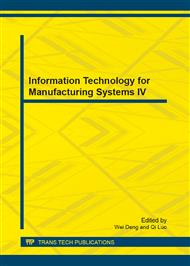p.205
p.212
p.217
p.222
p.229
p.235
p.239
p.244
p.250
The Verification of Material Plastic Flow at Optimal Warm Forging Temperature Using Computer Simulation
Abstract:
Warm forging is most commonly used for production of die forgings which are manufactured by means of precise forging. As compared to cold forging, warm forging enables to reduce forging forces size considerably. Development of warm forging technology is connected to formability and plasticity research of forged material at warm temperatures. This contribution brings a methodology for optimal forging temperature determination from recommended interval of warm temperatures used for chromium-manganic steel 16MnCr5. The given steel is appropriate for case hardening and precise die forgings production. For the purpose of verification of steel forgeability at the recommended interval of warm forging temperatures 600, 650, 700 and 750 °C technological test of upsetting according to Zidek is used. The main factor of plasticity for optimal warm temperature selection from examined temperature interval is value of reduction of area that was determined by tensile test. Numeric simulation of forging process in closed die confirmed correct plastic flow of steel 16MnCr5 at recommended forging temperature 700 degrees of Celsius.
Info:
Periodical:
Pages:
229-234
Citation:
Online since:
September 2013
Authors:
Keywords:
Price:
Сopyright:
© 2013 Trans Tech Publications Ltd. All Rights Reserved
Share:
Citation:


